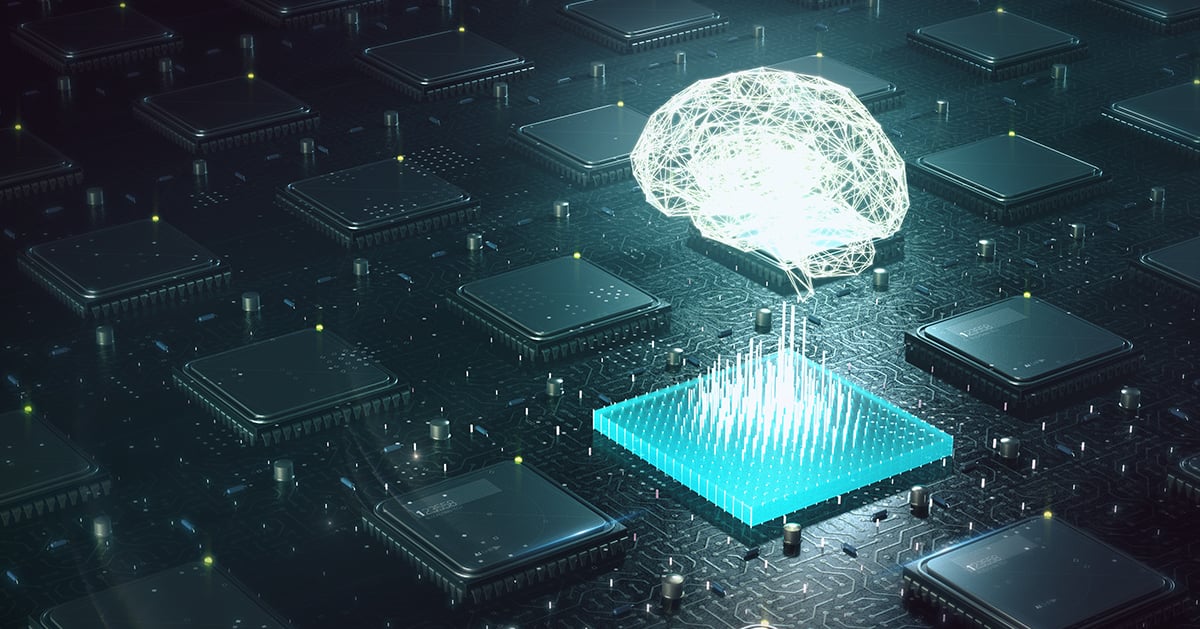
AI’s Next Horizon? Sustainable Attractions
Whenever the AI component seeps into technology conversations, it can elicit both intrigue and exasperation. The long list of what AI can or should be able to do by this point can be overwhelming or simply not feasible. AI doesn’t really need to live in this black box—not when it has the power to exert actual evolution. It can be an essential tool in the drive to design, build, integrate and maintain attractions in a greener, more sustainable way.
In this first article in a series relating to how attractions can progress toward sustainability, we’ll look at the role of AI. Experts discussed AI and other sustainability trends in this recent webinar, Creating Sustainable Solutions for a Greener Future. We’ll expand upon those learnings to explore why modern attractions need to lean into AI.

The Application of AI in Attractions
The adoption of AI’s integration into facility management has been steadily rising, with most of the conversation focused on commercial buildings. However, it applies to attractions in the same way. While attractions are more unique in settings, usage, landscape and more, the core principles very much pertain. Consider how powerful this would be for the everyday management of a massive space with so many opportunities for failure like attractions.
AI technology can collect data, analyze it and then make human-like decisions. For example, AI digs into data to understand normal energy usage for HVAC systems, electrical power to run attractions, audiovisual (AV) equipment and just about anything else.

There are more ways that AI can support sustainability. It can gather data from sensors for weather, traffic or any other factor that would impact a facility. Then make adjustments to conserve resources.
For example, theme parks have acres of landscaping. If you have sensors monitoring the soil and weather, you’ll only water specific areas if needed. That can save gallons of water each day.
This practice includes a programming loop with variables and Boolean expressions. Each time the loop runs, a comparison of the variables and data set occurs, which allows the loop to “learn” and get “smarter.” That then delivers a host of advantages for sustainability.

The 4 Main Benefits of Leveraging AI in Sustainable Attractions
In looking at how AI delivers on sustainability initiatives, there are four primary categories to consider.
Predictive Energy Optimization
Predictive energy optimization is the process of using data from many different sources to increase energy efficiency. Those sources include internal and external. For example, sensors at attractions monitor when they are active and dormant, depending on crowd levels. Outside data could be monitoring the temperature and weather patterns. AI collects the data and identifies days or times when you can conserve energy.
Preventative Maintenance and Fault Detection
As mentioned above, capturing performance data of equipment and appliances can create alerts when something’s abnormal. At that point, there’s a fault detection, so its repair can occur much quicker before failure.
AI can do more by predicting when something needs maintenance. By consuming large amounts of data daily, AI can anticipate issues before it becomes a default. Using the technology in this way gives your equipment a longer life, and you reduce downtime. As a result, everything will be running optimally and not wasting resources.
Improved Occupant Comfort
AI can work to enhance guest experiences while also supporting sustainability. In attractions this relates to the guest experience. Really it’s the culmination of two previous points—energy optimization and preventative maintenance. If those two things are running smoothly with AI, then visitors are likely to feel more comfortable. Suddenly, rooms aren’t overly cold from AC units running too long, or the lighting works correctly, ensuring visibility and safety.
Visualized Data Insights and Analytics
Overall, AI can offer transparency in your attraction operations. You can track:
- Energy trends and usage
- What assets are in use (e.g., vehicles, equipment)
- How close your actual hourly rider number was to your THRC (theoretical hourly ride capacity)
- How THRC relates to the day of the week, day of the year, weather, tickets sold and other dynamic factors
With all this information, you create that valuable feedback loop. Over time, you have more data for analytics to apply to the next cycle and continue to optimize.
![[Get insights on the power of data and increasing uptime]](https://no-cache.hubspot.com/cta/default/5104351/ef1e2b03-69a5-48b8-bcdf-6ee49b7cac13.png)

Bringing Networks Together for Sustainable Attraction Development
In evaluating how AI can improve sustainability through these four channels, often what creates challenges in the attractions sector is how massive they are. However, there’s an opportunity to combine physical networks, which can reduce the sprawl of infrastructure and its costs.
The number of networks in an attraction could be 18 or more. Those can include lighting, DAS, special effects, points of sale, interactive displays, sensors and IoT (Internet of Things) devices and more. These are usually separate networks, each requiring its own cabling, switches, hardware, conduit, racks and equipment room.
These systems, however, need to be interoperable in many cases and share data.
It’s a massive grid of applications that require coordination. The best approach is Technology Master Planning™. Simply put, it’s the coordination, planning and design of a unified infrastructure for separate networks and subsystems to identify efficiencies and savings.
Here’s a scenario to illustrate the strategy. An attraction may have hundreds of IoT devices across 18 different networks. Recall, they are all in siloes, with their own cables, conduits and containment. Then they are plugged into network switches, which requires space, power and often cooling in equipment rooms. In this configuration, that’s a significant waste of resources and adds lots of expenses to your operating budget.
There’s no reason to keep them segregated. These systems can all run together with the proper setup of virtual LAN and managed switches. The more you consolidate physical systems and infrastructure, the more efficiency and cost savings you can realize. Further, with this design, you’ll be able to integrate more powerful AI solutions for greater environmental impact.
Maurizio Capuzzo
Maurizio Capuzzo, Electrosonic’s Chief Marketing Officer, fuses the science of data with the art of visual and verbal communication to explain how technology adds value and helps foster innovation. Maurizio writes from a wealth of experience, holding leadership roles in global technology companies as well as possessing a deep understanding of how technology contributes to business growth.










.jpg?width=1500&height=995&name=ELC501_N17_medium%20(1).jpg)








































































































































































































